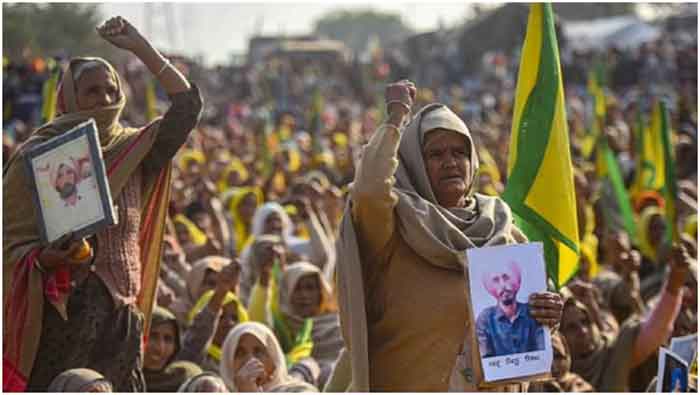
During the hearing of the farmer movement, the Supreme Court expressed concern towards the elderly and women and asked them to withdraw from the movement which is revealing the court patriarchal mentality towards women as well as the movement. Supreme court is directly trying to disturbed unity and organization of the movement. Chief justice of India said That
“We do not understand either why old people and women are kept in the protest”
With this statement CJI restricted women’s space to private domain and also excluded them from the Farmer category.
A. R Desai categorised Peasant movement on the basis of the pre- and post-independent era. In pre independence era it is known as Farmer movement while after independence Desai addressed it as an ‘agricultural movement’ because after independence other communities also participated in Farmer movements who has direct and indirect relation with the agriculture. As an indirect, human being cannot survive without food (Roti) while direct who are associated with the agriculture as an occupation. Ranjit Guha, in his book, ‘Elementary Aspect of Peasant Emergency in Colonial India’, has seen the revolt of the farmers in the form of peasant consciousness. So collective consciousness is one of the elementary characteristics of the movement. In this movement both element farmer and their collective consciousness in the form of women, elderly are creating hurdle for the government while women are emerging as an organisation for the social movement whether it is CAA or Farmer protest where they protect the laws of farmer. Women as an Organization play important role to give strong ground to the farmer movement. Therefore, the participation of women is trying to finish by the court.
We have to understand that women are as much connected to agriculture as men. Mostly male of Uttar Pradesh, Bihar, Haryana, Panjab are engaged in Internal and international migration where women take place after the male migration. In the absence of their men, women are managing the agricultural work whether it is as an agricultural labour or as farmer, The term ‘Feminization of Agricultural’ came into vogue during 90s where most of the male ran behind the development (city) and women remain at origin to look after the household and agricultural land. According to the OXFAM 2018 agricultural sector employs 80 per cent of all economically active in India in which 33 per cent are engaged as an agricultural labour and 48 per cent are self- employed. These women carrying double burden of domestic and agricultural. In spite of that their contribution are neglected in rural economy. Due to this invisibility Supreme court denied their participation in Farmer protest. Such statement of the court is demolishing women right as citizens where they are being denied the right to dissent, as women where they forced to withdraw the public life and compile to the domestic realm and as farmer, where they asked to move out from the farmer movement despite being farmer.
Neha Rai, assistant professor, S.S.Khanna Girls degree college , University of Allahabad
IF YOU LIKED THE ARTICLE SUPPORT PEOPLE’S JOURNALISM
 RSS Feed
RSS Feed















 January 15th, 2021
January 15th, 2021  Awake Goy
Awake Goy  Posted in
Posted in  Tags:
Tags: 













